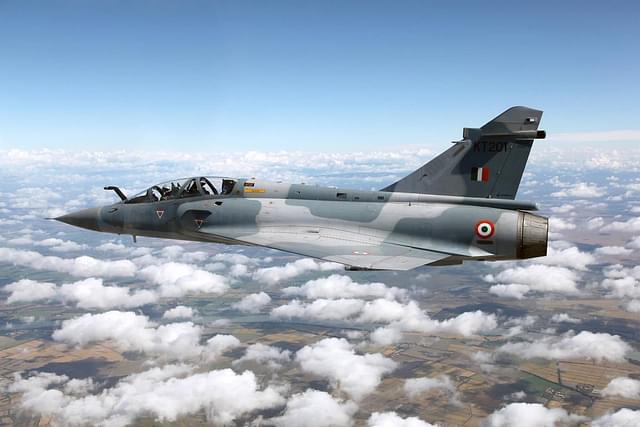SOURCE: AFI

As India commemorates the 25th anniversary of the Kargil War, a conflict that saw the Indian Army’s valiant efforts force Pakistan’s retreat from occupied mountain positions, the Indian Air Force’s (IAF) crucial role deserves revisiting. While the Pakistan Air Force (PAF) largely remained grounded, the Kargil War holds stories of unseen aerial encounters that could have escalated the conflict.
The IAF enjoyed unchallenged air superiority during the Kargil War. Pakistan deployed F-16s for Combat Air Patrol (CAP) missions, but they never directly engaged the IAF. However, declassified information reveals two instances where things came close to a clash.
Air Marshal Raghu Nambiar (Retd.) recounted an incident where his Mirage-2000, on an escort mission, detected a PAF F-16 approaching the Line of Control (LOC) on his Radar Warning Receiver (RWR). He reportedly achieved a lock on the F-16 for a brief period but held fire due to pre-determined rules of engagement. The F-16, perhaps sensing danger, turned back before breaching the designated no-engagement zone.
Another instance, confirmed by retired PAF pilot Kaiser Tufail, involved a single IAF MiG-29 equipped with Beyond Visual Range (BVR) missiles locking onto two Pakistani F-16s. Lacking BVR capabilities themselves, the F-16s disengaged and retreated as IAF’s Mig-29 was armed with R-77 that provided edge over PAF F-16s. This highlights the tactical advantage India possessed with its advanced missile systems.
The Kargil War saw an unspoken understanding between the air forces. However, this understanding seemingly broke down in the aftermath of the 2019 Pulwama attack. Pakistan’s attempt to shoot down an IAF Sukhoi-30MKI deep inside Indian airspace signaled a shift in strategy, raising concerns about future encounters. Wing Commander Abhinandan Varthaman’s MiG-21 was unfortunately shot down by a PAF F-16 missile while crossing the LOC, highlighting the potential for escalation in any future aerial engagements.
The Kargil War showcased the IAF’s capabilities and its vital role in safeguarding Indian airspace. However, the close calls during the conflict serve as a reminder of the potential for a wider air war. As both India and Pakistan continue to modernize their air forces, de-escalation measures and clear communication channels remain critical to prevent future conflicts from escalating into full-blown air wars.